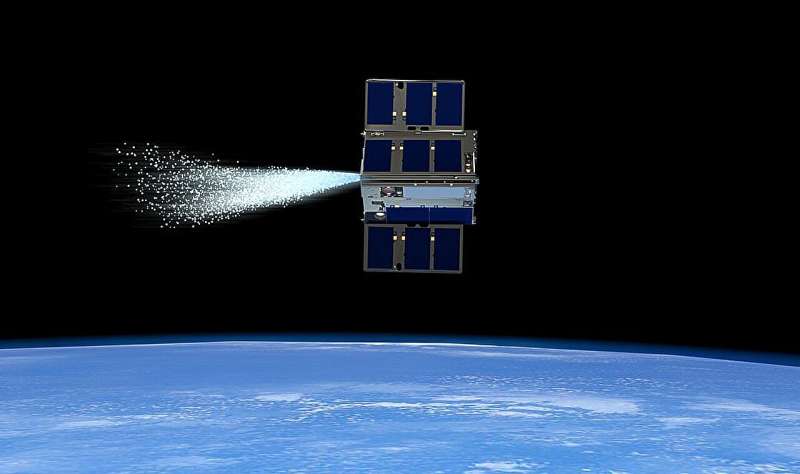This article has been reviewed according to Science X's editorial process and policies. Editors have highlighted the following attributes while ensuring the content's credibility:
fact-checked
trusted source
proofread
CubeSat propulsion technologies are taking off

CubeSats are becoming ever more popular, with about 2,400 total launched so far. However, the small size limits their options for fundamental space exploration technologies, including propulsion. They become even more critical when mission planners design missions that require them to travel to other planets or even asteroids.
A team from Khalifa University of Science and Technology in Abu Dhabi recently released a review in Aerospace of the different CubeSat propulsion technologies currently available—let's look at their advantages and disadvantages.
The paper breaks propulsion systems into four categories: Chemical, Kinetic, Electrical, and "Propellant-less." Chemical systems are the traditional rockets most people think of when launching satellites—they burn chemicals together and expel gas created by the fire to produce thrust. Kinetic systems use things like cold gas, where instead of reacting two chemicals together, they simply push gas molecules out to propel themselves in the opposite direction.
Electrical systems are similar to kinetic systems but use an electrical system, such as a Hall Effect thruster, to heat the propellant before it is expelled. Lastly, propulsion-less technologies don't have any active component and instead, passively use the forces from space itself to move about. The most common example of this is solar sails.
Let's start with chemical propulsion. This is probably the least helpful setup for CubeSats, as the material requirements for handling small explosions make the supporting infrastructure too bulky and heavy to fit into a traditional CubeSat package. Even though some miniaturized systems that could fit in a CubeSat framework have been developed, chemical propellant systems likely won't take off soon.
Kinetic systems are much more common for CubeSats, and the paper breaks them down into two major categories: Cold Gas and Resistojet. In the past, we've reported about systems that use everything from ammonia to water as kinetic propellants, which would fall under the category Cold Gas. If the gas is heated slightly before release, the system becomes a Resistojet configuration. While the heating is nowhere near the level of explosions used in chemical rockets, it still increases the force of the propellant exiting out the thruster's nozzle.
Electric propulsion is similar in many ways to Kinetic propulsion, but it uses electric energy to heat its propellants before discharge. The paper breaks these technologies into three major categories: Electrothermal discharge, Electrostatic, and Electromagnetic. Electrothermal discharge systems are similar to arcjets, though no system small enough to fit into a CubeSat form factor has yet been developed that can provide the power needed for such a system.
Electrospray systems use electrical forces rather than heating to accelerate charged particles used as propellants. Charged particles are accelerated through a magnetic field created by the propulsion system and forced through the thruster's nozzle at high speed. Electromagnetic systems operate similarly by using an arc to ionize propellant, which is then pushed out by the magnetic field that is formed around the ionized material.
Overall, electric systems are becoming more common on CubeSats. Still, their material requirements typically demand high-precision machining and other advanced technologies that make them trickier to develop than simple kinetic systems.
Non-propellant systems have become more widespread with the successful test of Lightsail, the Planetary Society's solar sail technology demonstrator. However, other propellant-less technologies, such as tethers or a magnetic sail that powers itself via the magnetic fields floating around the solar system.
At the same time, many of these systems remain in the conceptual phase; their ability to provide potentially limitless thrust appeals to CubeSat designers with longer-term missions in mind. However, they are again limited by material development and size constraints, as large structures are required for many of them, and it is challenging to pack those into the confines of a CubeSat.
With all the development going on in the world of CubeSats, more ideas will undoubtedly be mooted in the future. With launch costs coming down, more industries and non-governmental organizations will be interested in how the platform could help them. But no matter where CubeSats end up being used, they will have to trust their propulsion systems to get there.
More information: Suood Alnaqbi et al, Propulsion Technologies for CubeSats: Review, Aerospace (2024). DOI: 10.3390/aerospace11070502
Provided by Universe Today





















